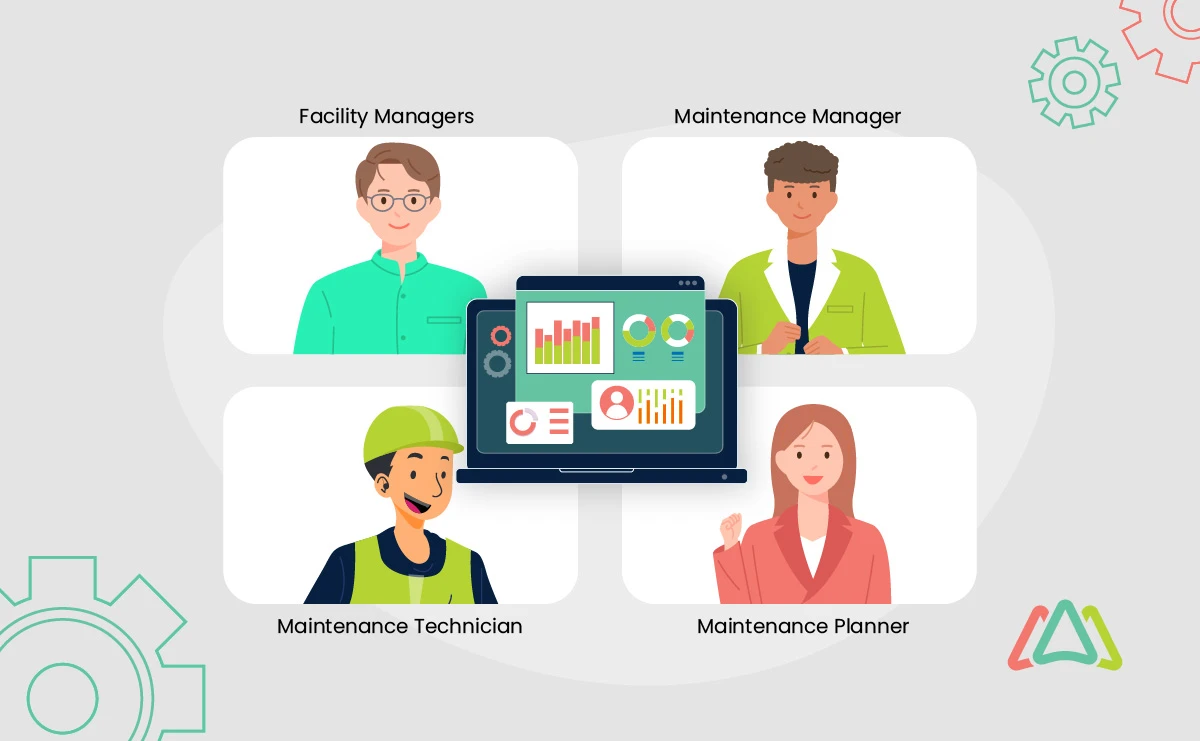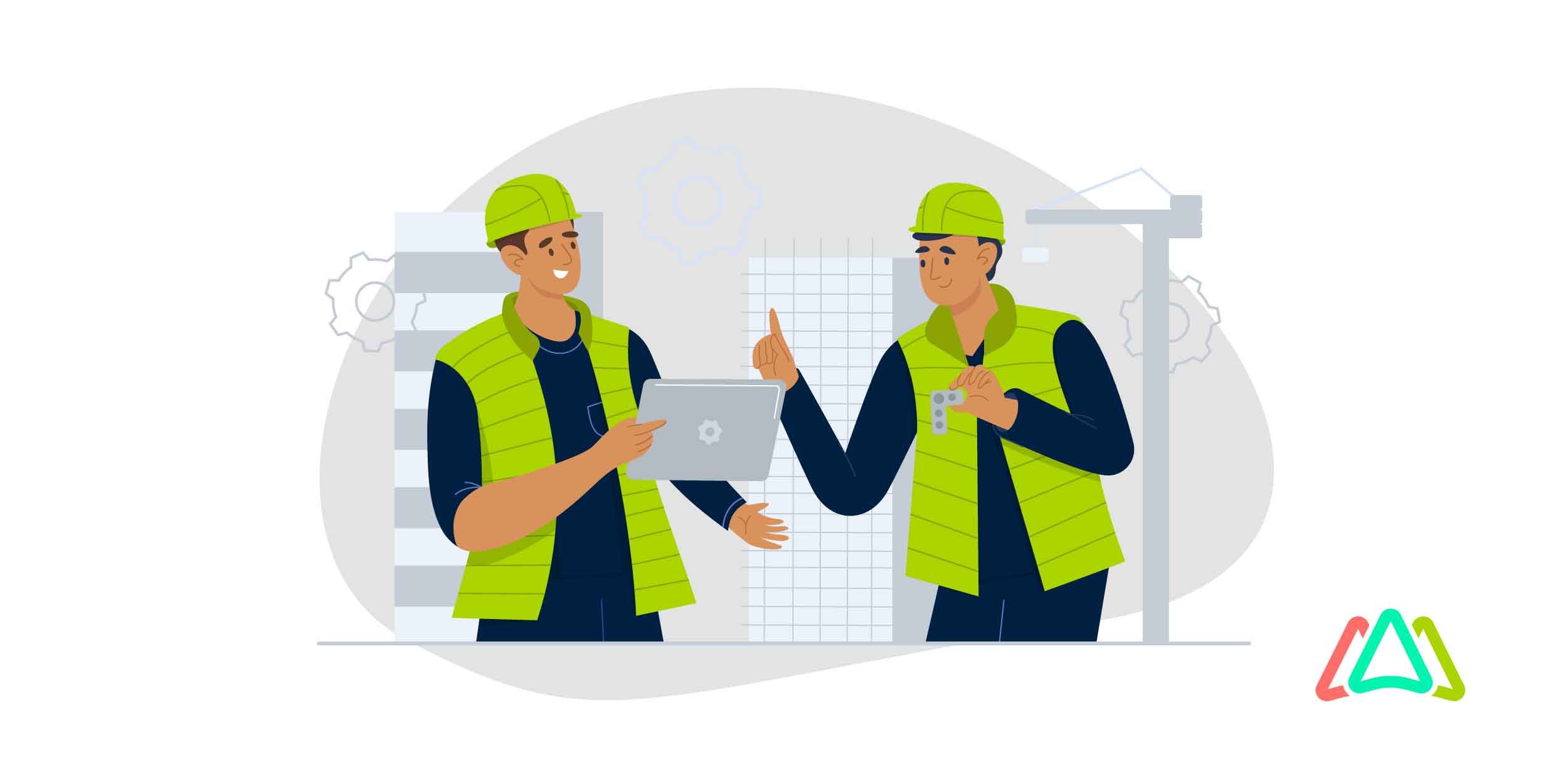
Benefits of CMMS Software for Key Roles in Maintenance Operations
Introduction
The world of maintenance operations continues to evolve in response to economic demands, greater market competition, and the need for business owners to increase efficiency and reliability and decrease operations costs. The Computerized Maintenance Management System (CMMS) is the answer to this challenge. This software solution harnesses technological advancements in automation, data analytics, and even artificial intelligence to streamline and optimize maintenance operations by centralizing maintenance data, automating maintenance processes, and facilitating efficient resource management. The result is that organizations are offered increased efficiency and reliability in company operations, which translate into increased productivity, reduced downtime, cost savings, and an improved bottom line.
CMMS software is also responsible for transforming maintenance professionals' duties. From facility managers overseeing building operations to technicians performing hands-on maintenance tasks, CMMS offers numerous benefits that streamline operations, enhance productivity, and ensure regulatory compliance. This article focuses on the benefits CMMS software provides maintenance professionals in their specific roles.
Facility Managers
Facility managers oversee the effective functioning of physical structures. CMMS software aids them by offering a centralized platform to manage maintenance tasks, ensuring they have a comprehensive view of operations. This enables efficient management of space and assets while ensuring adherence to safety and building regulations through scheduled inspections and meticulous record-keeping.
CMMS’s unified platform allows facility managers to monitor and manage all maintenance tasks simultaneously. For example, facility managers can use CMMS to create and assign work orders for various maintenance activities, such as HVAC system inspections, plumbing repairs, or lighting upgrades.
Facility managers can utilize asset tracking features to maintain a comprehensive inventory of all equipment and facilities within their portfolio. This includes recording essential information such as equipment specifications, maintenance history, warranty details, and service contracts. For instance, they can track the lifespan of critical assets like boilers or elevators, schedule preventive maintenance tasks to extend their longevity and plan for replacements when necessary.
Regarding compliance issues, CMMS software empowers FMs to be proactive in maintenance planning and detailed record-keeping. Facility managers can utilize the software to schedule regular inspections and audits to ensure adherence to regulatory requirements. The software can automatically generate inspection checklists, track inspection results, and maintain detailed records of compliance activities. Facility managers can even set up recurring inspection schedules for fire safety systems, document inspection findings, and store relevant compliance documentation directly within the CMMS platform.
Finally, CMMS software’s reporting and analytics features enable facility managers to gain insights into maintenance performance and resource utilization. They can generate customizable reports on facility management KPIs such as work order completion rates, downtime metrics, and maintenance costs. These insights empower facility managers to identify areas for improvement, optimize maintenance processes, and make data-driven decisions to enhance operational efficiency and cost-effectiveness.
Maintenance Managers and Supervisors

Maintenance managers and supervisors play a pivotal role in overseeing daily maintenance operations. CMMS streamlines work order management from beginning to end, enhancing team productivity. The system also offers tools for performance monitoring, identifying and addressing any inefficiencies, and scheduling routine maintenance to minimize downtime.
CMMS software equips managers and supervisors with powerful features to streamline their responsibilities and drive operational efficiency. One key feature is streamlined work order management, which enables maintenance managers to create, assign, and track work orders seamlessly from initiation to completion. For example, CMMS allows managers to generate work orders for various maintenance tasks, such as equipment repairs, preventive maintenance, or facility inspections, and assign them to the appropriate technicians or teams. Managers can prioritize work orders based on urgency, allocate resources efficiently, and monitor real-time progress to ensure timely completion.
As with facility managers, CMMS provides tools for performance monitoring, allowing maintenance managers to track key metrics and analyze team performance effectively. For instance, managers can use CMMS dashboards and reporting features to monitor work order status, track technician productivity, and identify any bottlenecks or inefficiencies in the maintenance process. By gaining insights into performance metrics such as mean time to repair (MTTR), mean time between failures (MTBF), and overall equipment effectiveness (OEE), managers can pinpoint areas for improvement and implement targeted strategies to enhance team productivity and optimize resource allocation.
Finally, maintenance managers and supervisors can use CMMS to set up recurring maintenance tasks, such as equipment inspections, lubrication routines, or calibration checks, and assign them to technicians at predefined intervals. By proactively scheduling routine maintenance, managers can prevent unexpected equipment failures, extend asset lifespan, and ensure optimal equipment performance, thus minimizing costly downtime and maximizing operational uptime.
Maintenance Planners
Maintenance planners play a crucial role in the strategic planning of maintenance activities within an organization, ensuring that all necessary resources are available for timely execution. CMMS software equips maintenance planners with advanced features to streamline planning processes, optimize resource utilization, and enhance efficiency.
One of those key features is advanced planning tools, which enable detailed and comprehensive planning of maintenance activities. For example, CMMS allows planners to create maintenance schedules based on equipment criticality, resource availability, and regulatory requirements. Planners can define maintenance tasks, set priorities, allocate resources, and establish timelines for each maintenance activity within the CMMS platform. By leveraging advanced planning tools, maintenance planners can develop strategic maintenance plans that maximize equipment reliability, minimize downtime, and optimize resource allocation.
CMMS software utilizes historical data analysis to support predictive maintenance strategies, enabling maintenance planners to anticipate equipment failures and proactively address maintenance needs before they escalate into costly breakdowns. For instance, CMMS can analyze historical maintenance data, such as equipment performance metrics, failure patterns, and maintenance logs, to identify trends and patterns indicative of potential issues. Maintenance planners can then use this predictive insight to schedule preventive maintenance tasks, replace worn components, or implement corrective actions to mitigate the risk of equipment failures and minimize unplanned downtime.
Maintenance Technicians
Maintenance technicians are the unsung heroes of maintenance operations. They carry out hands-on maintenance tasks to keep equipment and facilities running smoothly. CMMS software empowers technicians with various features designed to enhance their efficiency, communication, and effectiveness in completing maintenance tasks.

One key feature of CMMS for maintenance technicians is mobile access, which allows technicians to access work orders, equipment information, and documentation directly from their mobile devices while on the go. For example, technicians can use CMMS mobile applications to view assigned work orders, check equipment history, access manuals or schematics, and update the work order status in real time, regardless of location. This mobile access enables technicians to stay connected and productive, even when working in remote or field locations, thus minimizing delays and maximizing uptime.
CMMS’s skill-tracking capabilities enable organizations to maintain detailed records of technicians' skills, certifications, and training qualifications within the system. For instance, CMMS can track technicians' expertise in specific equipment types, maintenance procedures, or safety protocols, allowing managers to assign tasks to the most qualified technicians based on their skill sets. By leveraging skill-tracking features, organizations can ensure that tasks are assigned to technicians with the appropriate expertise, optimizing efficiency and reducing the risk of errors or safety incidents.
Finally, CMMS provides a feedback loop mechanism that enables technicians to provide updates, report issues, and offer feedback on maintenance tasks seamlessly within the system. For example, technicians can use CMMS to document work performed, record observations, report equipment defects, or suggest process improvements directly from their mobile devices or workstations. This feedback loop allows technicians and management to communicate, facilitates continuous improvement, and enables organizations to promptly and proactively address issues. CMMS’s automated notifications and alerts function ensures stakeholders are aware of task status changes, ensuring transparency and accountability throughout the maintenance process.
Machine Operators
Machine operators play a critical role in ensuring the smooth operation of equipment and are often the first to detect problems. CMMS software offers features designed to empower machine operators to report issues promptly, facilitate effective communication with maintenance teams, and enhance their awareness of maintenance schedules.
One key feature of CMMS for machine operators is real-time issue reporting, which enables operators to report equipment issues or abnormalities directly within the system. For example, operators can use CMMS mobile applications or web portals to submit maintenance requests, describe the nature of the issue, and attach relevant photos or documentation to provide additional context. This immediate reporting capability allows maintenance teams to quickly assess the situation, prioritize tasks, and initiate appropriate corrective actions, thereby minimizing downtime and preventing potential equipment failures.
Finally, CMMS enhances maintenance awareness among machine operators by providing visibility into maintenance schedules and activities. For example, operators can access maintenance schedules, work order status updates, and upcoming maintenance tasks within the CMMS platform. This visibility enables operators to anticipate maintenance activities, plan production schedules accordingly, and proactively address potential disruptions. By keeping operators informed and engaged in the maintenance process, CMMS helps foster a proactive maintenance culture, reduces the likelihood of unplanned downtime, and improves overall equipment reliability and performance.
Reliability Engineers
Reliability engineers are instrumental in ensuring the optimal performance and longevity of equipment within an organization. CMMS software equips reliability engineers with advanced data analysis capabilities to enhance equipment reliability and efficiency. For instance, CMMS enables reliability engineers to collect and analyze vast maintenance data, including equipment performance metrics, failure patterns, and historical maintenance records. By leveraging data analysis tools such as trend analysis, root cause analysis, and reliability-centered maintenance (RCM) methodologies, reliability engineers can identify underlying issues, pinpoint failure trends, and develop targeted strategies to improve equipment reliability and performance.
CMMS also assists reliability engineers in managing the entire lifecycle of assets, from procurement to retirement, by providing tools for asset tracking, performance monitoring, and lifecycle cost analysis. The software helps organizations achieve operational excellence and maximize return on investment (ROI) from their assets by optimizing asset utilization, scheduling timely replacements, and maximizing asset reliability.
Parts and Inventory Managers

Parts and inventory managers are crucial in ensuring maintenance operations run smoothly by maintaining adequate parts availability while avoiding unnecessary stockholding. CMMS software provides a range of features to support efficient inventory management. For instance, CMMS offers real-time inventory tracking capabilities, allowing parts and inventory managers to monitor inventory levels, track stock movements, and identify inventory discrepancies accurately. CMMS helps managers make informed decisions regarding inventory replenishment and allocation by providing up-to-date visibility into inventory levels, ensuring that critical parts are always available when needed without excess stockpiling.
CMMS streamlines inventory management processes through automated reordering functionalities. For example, CMMS automatically generates purchase orders or reorder notifications when inventory levels fall below predefined thresholds, eliminating manual intervention and reducing the risk of stockouts or production delays due to insufficient inventory. Finally, CMMS offers cost-tracking functionalities, enabling parts and inventory managers to monitor inventory costs, track expenses, and analyze spending trends over time.
Purchasing Officers
Purchasing officers are critical in ensuring that maintenance activities have access to the necessary parts, tools, and services. CMMS software offers features specifically designed to streamline procurement processes and support purchasing officers in their responsibilities. Purchasing officers can use CMMS to evaluate vendor performance, track supplier relationships, and make informed decisions when selecting vendors for procurement needs. By providing a consolidated platform for vendor management, the software helps purchasing officers establish and maintain strong relationships with reliable suppliers, ensuring timely delivery of quality parts and services.
Additionally, CMMS facilitates purchase order management, automating the creation, tracking, and processing of purchase orders. For example, CMMS can generate purchase orders based on predefined inventory thresholds or maintenance requirements, route them for approval through predefined workflows, and track their status in real-time. This automation eliminates manual paperwork, reduces the risk of errors or delays in procurement processes, and ensures that purchases are processed efficiently and accurately.
Conclusion
CMMS is a versatile tool that offers benefits to various organizational maintenance roles. By enhancing efficiency, improving reliability, and fostering better decision-making through data-driven insights, CMMS software contributes significantly to an organization's operational excellence. Its adoption not only streamlines maintenance operations but also drives overall organizational success.
TABLE OF CONTENTS
Keep Reading
The longest U.S. federal government shutdown to date lasted 43 days, beginning on October 1, ...
5 Dec 2025
Every maintenance professional faces it sooner or later — that critical time when an aging ...
18 Nov 2025
The term 'best' is often used loosely, without a clear understanding of its context or ...
14 Nov 2025
In the not too distant past, maintenance strategies have been defined by reaction—fixing ...
13 Nov 2025
Tax season is the time of year that often sends a ripple of anxiety through many of us. The ...
11 Nov 2025
Selecting a Computerized Maintenance Management System (CMMS) can, at first glance, be an ...
4 Nov 2025
In healthcare facilities, equipment uptime involves more than achieving operational ...
31 Oct 2025
Companies are subject to economic ups and downs, also known as economic volatility. Today, ...
30 Oct 2025
Maintenance challenges are a constant struggle, with unplanned downtime costing manufacturers ...
27 Oct 2025
Last winter, a maintenance technician at a U.S. paper mill ignored a predictive alert that ...
10 Oct 2025
Many organizations proudly say they “have a CMMS,” but ownership alone doesn’t equal ...
9 Oct 2025
Every maintenance team is under pressure to do more with less. Unplanned downtime is often ...
7 Oct 2025
The implementation of simple, yet powerfully effective, checklists has repeatedly ...
3 Oct 2025
In manufacturing, every second counts. When production stops, whether due to scheduled ...
2 Oct 2025
The increasing cost of maintenance, lack of accountability, and siloed systems leave many ...
30 Sep 2025
Preventive maintenance is one of those things maintenance teams know they need to do, but it ...
26 Sep 2025
Public services are essential to daily life. The provision of safe roads, functional transit, ...
25 Sep 2025
For most manufacturing facilities, a major focus of their maintenance teams revolves around ...
24 Sep 2025
Have you ever tried explaining to the CEO why the production line has been down for hours ...
18 Sep 2025
Over the past few decades, the hotel industry has undergone a dramatic transformation. ...
16 Sep 2025





